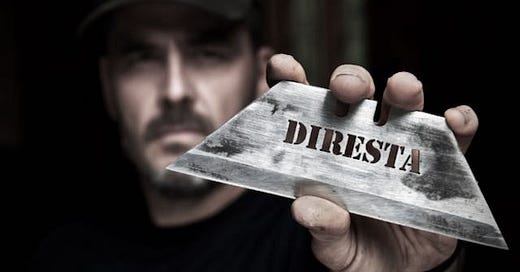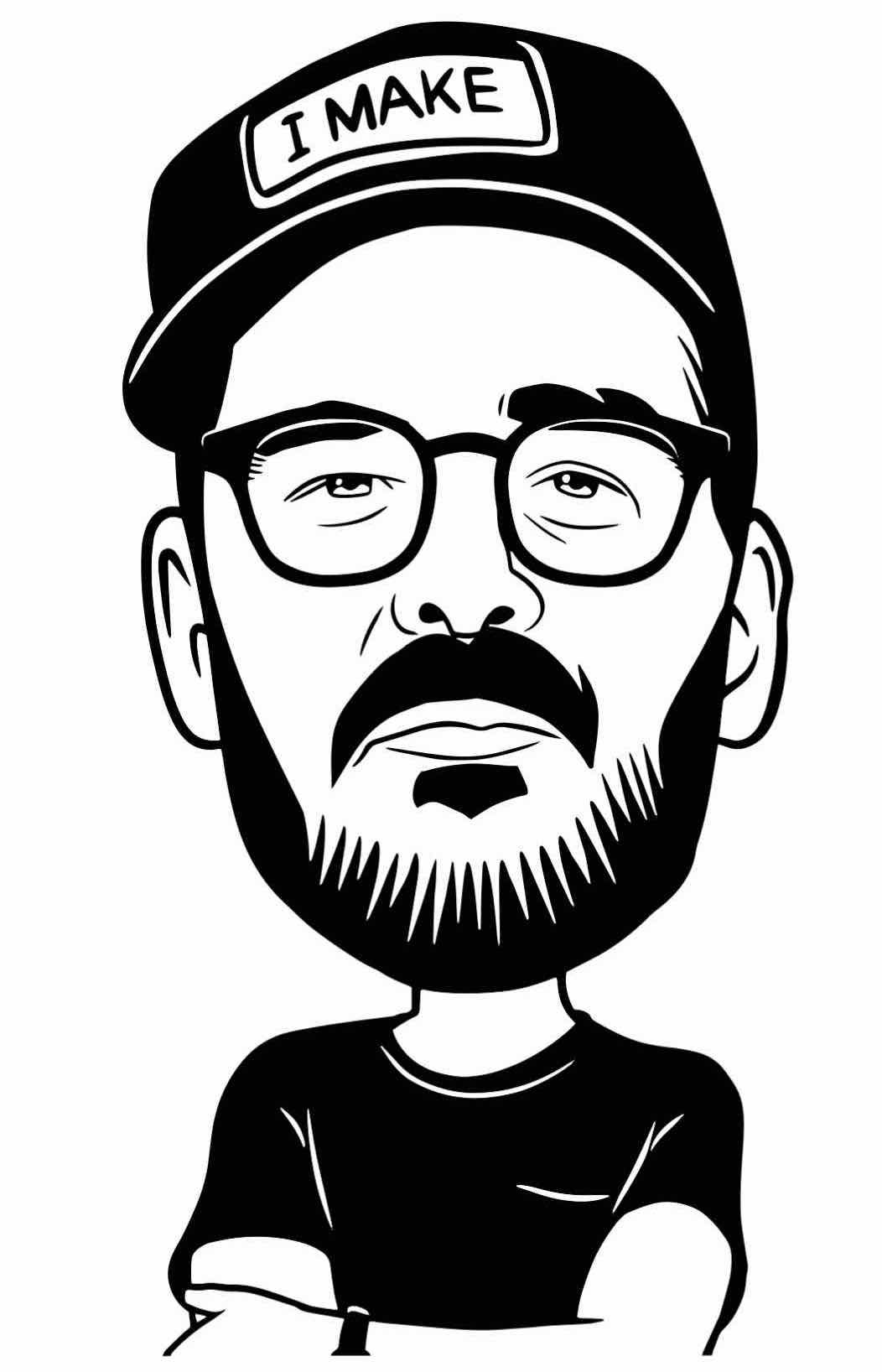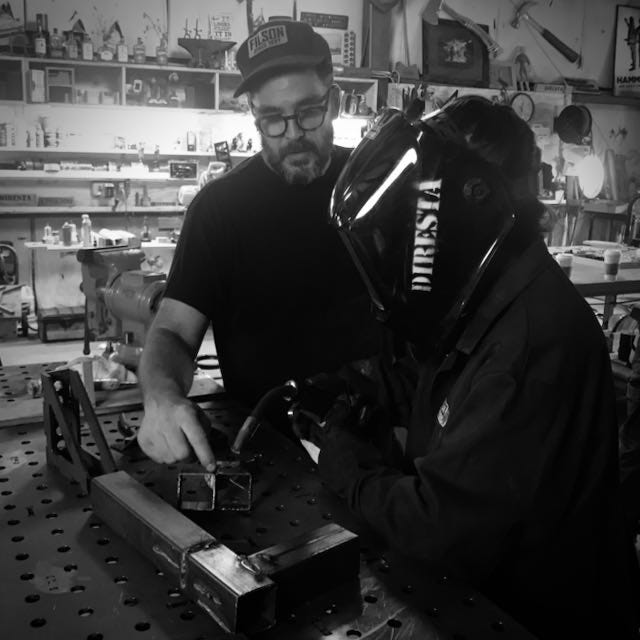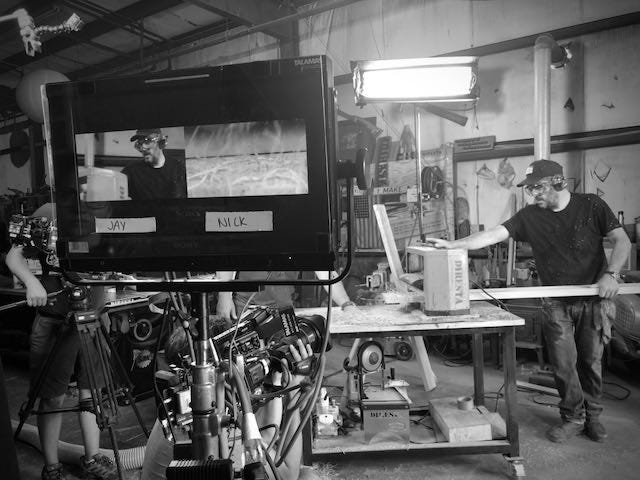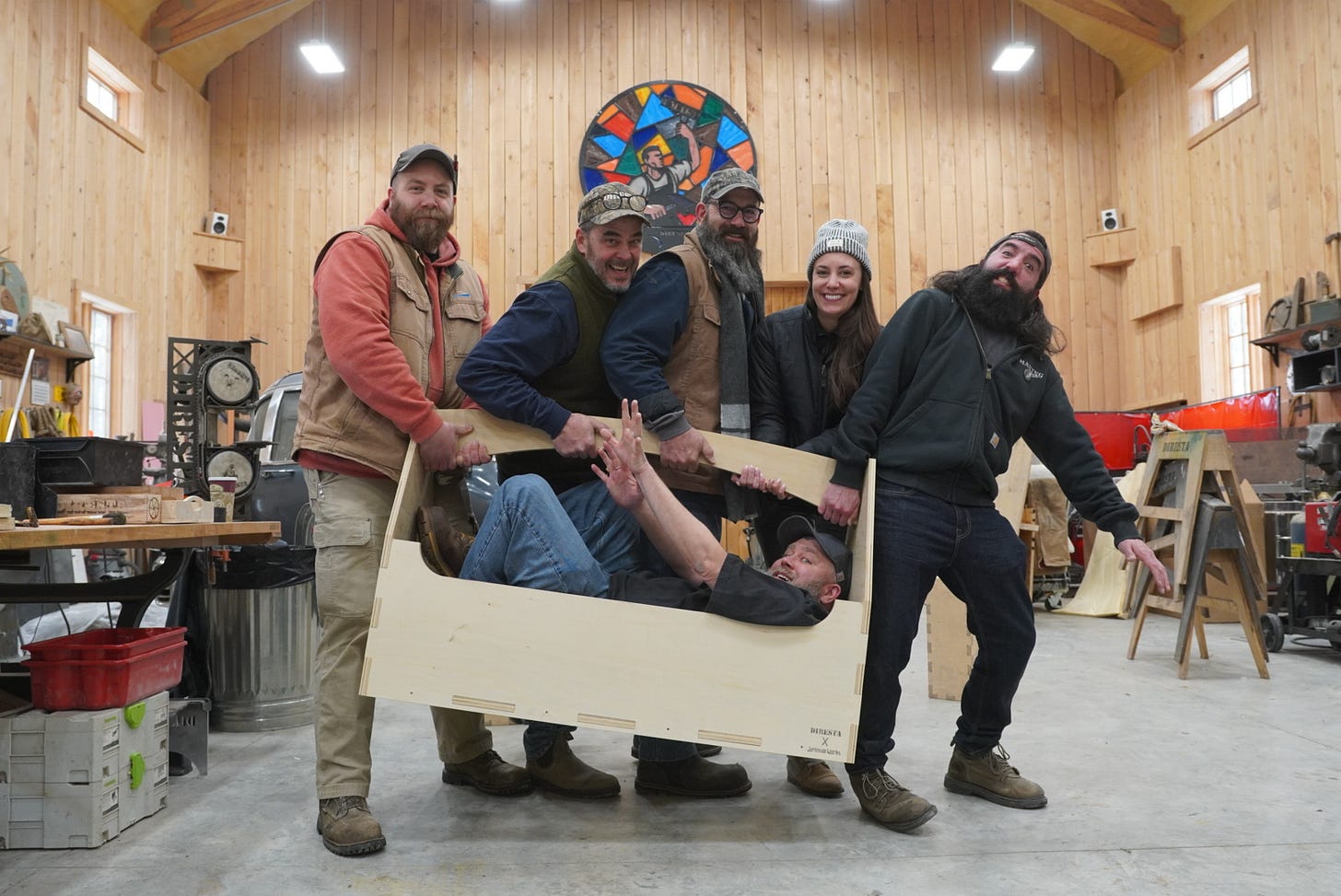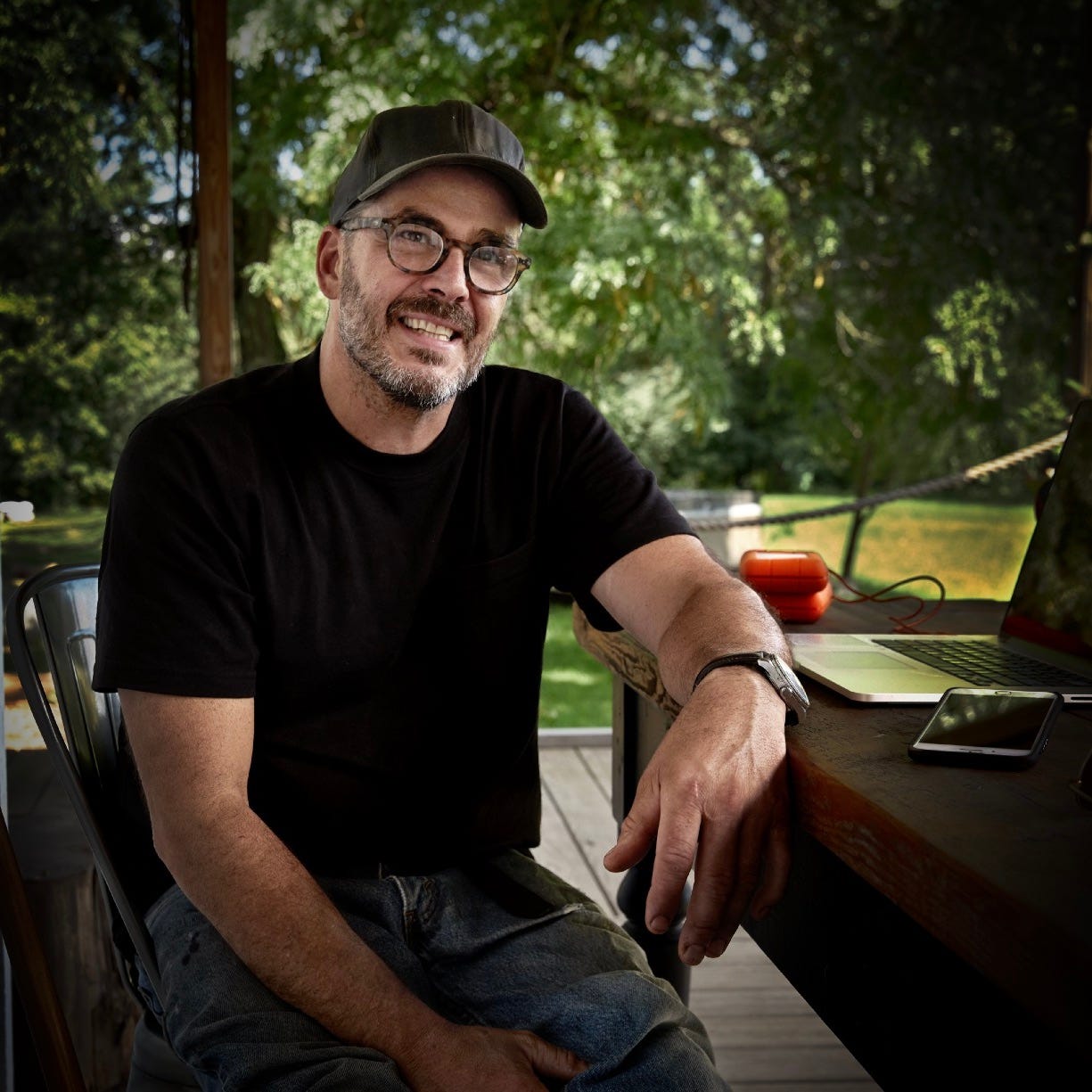Don't Underestimate Jimmy DiResta
TV producers and network executives have struggled to define him, but YouTube Maker Jimmy DiResta has carved his own path to success.
A New Episode!
Good morning everyone and welcome back to the Quarantine Creatives newsletter, a weekly companion to my podcast of the same name.
This week, the podcast has returned after a nine month hiatus, just in time to mark the two year anniversary of the start of the pandemic. As we enter our third year with COVID, I am hoping to make the podcast and newsletter a place to explore the lessons that we have learned and to rethink our approach to life, work, and family moving forward.
The newsletter is available for free every week. Please consider subscribing to have it delivered to your inbox:
I couldn’t be more thrilled to welcome my friend Jimmy DiResta back to the podcast this week. Today’s newsletter looks at the arc of Jimmy’s career and the people that have struggled to define him.
Jimmy vs The Producers
The first time that I met Jimmy DiResta in 2017, he sat across from me and another producer in his workshop and laid out the score- he didn’t like people like us very much.
We were in a large metal warehouse that had been vacant for the last decade or so in the Catskills region of Upstate New York once known as The Irish Alps. The area saw its heyday as a resort community from the 1950s to 1970s, but has since become an affordable place to buy land, grow creativity, and be left alone.
Jimmy, a toy maker, inventor, woodworker, metalsmith, and YouTuber, had just moved his operations into this new space when I arrived, leaving behind Lower Manhattan.
He went on to explain why he was skeptical of folks like me. (At the time, I was the Senior Producer and Director of the PBS series Ask This Old House.)
Jimmy and his brother John, a comedian and woodworker, had been involved in a number of TV shows for various cable networks, including Trash to Cash, Hammered, and Dirty Money. Each series lasted for only a season or two. Often, Jimmy felt like the producers and network executives missed the mark when it came to understanding his particular brand of genius (my words; Jimmy is too humble to refer to himself as “genius”).
The concepts of his past shows were contrived, the builds were corny, and it didn’t showcase the amazing breadth of talent that Jimmy had to offer. These shows met the needs of a network for a season or two, but they didn’t move the needle much for Jimmy and were feeling less worth his time.
We weren’t there to pitch him a new show concept, only a guest spot on Ask This Old House. Still, he wanted us to know that it might take some work to get producer types like us on his side.
The truth is, Jimmy didn’t need us, or anybody else in my line of work, for that matter.
He was already approaching one million YouTube subscribers back in 2017 (today, it’s closer to 2 million), simply by shooting, editing, and uploading videos of nearly every project he was making in his shop. He could create what he wanted and tell his story his way, no producer needed.
Jimmy also had the attention of some pretty big names, including Nick Offerman, whose celebrity as a woodworker was gaining steam after a successful run on NBC’s Parks and Recreation where he played Ron Swanson.
Nick and Jimmy had partnered up a few years earlier to build a wooden canoe, with Jimmy filming the project and eventually marketing it as a DVD. (When Jimmy was first on my podcast back in 2020, he shared some amazing stories about his early encounters with Nick).
Nick even profiled Jimmy in his woodworking book Good Clean Fun, with complimentary observations such as this:
“Jimmy knows how everything is made, and what he doesn't know, he finds out. Then he tucks it into his cranial filing system for later use-so that when he's brainstorming any future project, he has all the possible options of fabrication available to him.”
There has always been something with Jimmy that has been hard for professional media types to quantify which fans understand in an instant.
Underestimated
Jimmy was making good money building projects for clients, he had a fan base that was loyal even if it wasn’t mass market scale, and was in complete control of his image. He was right to be skeptical of what a producer might do to that world.
As he shared with me his stories of shows that had fizzled before ever really catching fire, the theme that I kept hearing was that Jimmy was being underutilized. He had an expansive skillset that few knew how to harness.
In truth, I had underestimated him myself for a few years prior to that first meeting.
Jimmy had first been put on my radar by the host of This Old House, who had a chance encounter with him at an event for DIY Network. Ever since that meeting, I heard stories about this genius maker and had been encouraged to consider him for some kind of role on our show.
But knowing that Jimmy was from cable TV, I imagined he would be a non-starter with some of the internal folks that saw This Old House as the originator of a genre, and anything that came after our premiere in 1979 to be inferior. I was judging him by TV shows where he was underutilized, and by my own fears about internal politics.
When I produced a tour of Nick Offerman’s Wood Shop in Los Angeles for Ask This Old House, Nick made sure to give Jimmy a glowing personal recommendation. That caused me to take another look at Jimmy and made me want to get to know him better.
Professor Jimmy
Despite Jimmy’s rough preamble about not trusting producers, I soon learned that he was incredibly generous with his time and expertise. The door to Jimmy’s workshop was always open, and plenty of people would stop by to say hello. On that first visit, one of those visitors included the marketing director for Lincoln Electric, who had recently entered a partnership with Jimmy.
Jimmy asked me and the producer I was with if we had ever welded. We hadn’t. Without missing a beat, Jimmy outfitted us with welding jackets, helmets, and gloves and began teaching us the basics of how to weld.
Jimmy was able to succinctly explain how to begin a weld, then he would watch us try it and coach us to get better results. Within about 20 minutes, we both felt like confident welders!
And that was one of the keys to unlocking Jimmy- he is a natural teacher. I didn't know it at the time, but Jimmy had been teaching at the School of Visual Arts in New York for many years. Jimmy’s coaching side was something Nick Offerman had also discovered, which he discussed in Good Clean Fun:
His curiosity and enthusiasm are infectious, especially because, although others know him primarily as a woodworker, he claims no specialty- beyond "making," that is. He'll discuss an intricate job of welding a display case with the same fervor as weaving a basket out of recycled cloth strips. What was immediately clear was that he just loves to make things.
Seeing that teacher side made it clear that he was a natural fit with the cast of Ask This Old House. We realized the power in watching Jimmy work and that he could bring a depth of knowledge to the show that few others could.
A few weeks after that initial scouting trip, we were back with cameras in tow. It’s been a while for me, but if my count is correct, we taped five segments with Jimmy over the next three years.
Every trip to the Catskills was magical. We would spend three or four days there at a time, working on multiple projects. Random friends, family members, and fans would stop by unannounced, sometimes to take a photo and gawk, sometimes to trade neighborhood gossip.
We would spend long days sweating in the hot warehouse shop, then would sit on Jimmy’s wraparound front porch at his 1800s farmhouse down the road and enjoy cold beer and a a nice dinner. I worked at This Old House for 15 years, and some of my best memories from that time are days spent at Jimmy’s farmhouse and workshop.
It was always my hope that we could find a way to expand a partnership with Jimmy beyond just a guest star, but that was not to be, at least in my time at This Old House. I made the case internally to anybody that would listen, but yet again, I came up against people underestimating Jimmy.
People that hadn’t spent time filming with him didn’t understand what he was about, or more importantly, how to sell it. I could imagine ten different series ideas, all helmed by Jimmy, but there was only an appetite at the time for more guest spots and little more.
It was recently announced that some of Jimmy’s videos will now appear on the This Old House Makers Channel on Roku, nearly five years since that first visit, but that’s not quite the original production I had hoped was possible.
When Nick Offerman and his Parks and Recreation co-star Amy Poehler were tapped to host Making It, a building competition show for NBC, Jimmy was brought in to help coach the contestants.
The announcement of Jimmy’s involvement with Making It was met with fanfare on social media, followed by confusion when Jimmy had very little screen time throughout the series. This was remedied somewhat in subsequent seasons by using Jimmy for social media videos, yet his NBC airtime still remains small three seasons into the series.
I am not privy to the reasoning behind how little Jimmy appears on Making It, but I can’t help but feel like it’s another example of decision makers underestimating him.
Making Fun
Personally witnessing Jimmy’s talents, and seeing how others have struggled to utilize him to his fullest potential, makes it incredibly exciting to watch Jimmy’s new show.
Making Fun premiered on Netflix this month. It features Jimmy and a few of his fellow makers taking creative pitch ideas from children and then building their fantasy toys, which are larger than life.
Here’s the trailer:
As Jimmy tells the story in this week’s episode of the podcast, this show has been kicking around in some form for many years. The idea originated when a casting agent at a production company saw the potential in this one photo of Jimmy and his friends Paul Jackman, John Graz, Pat Lap, and Derek Forestier.
A pilot was created, the show was pitched to a few networks, and the production company cycled through a number of producers and creative concepts. At one time, the show would’ve featured the makers creating projects for fans, but complications with COVID protocols made bringing in guests for each episode logistically challenging.
Ultimately, producer Mike Odair was brought on board and realized that Jimmy and his friends were basically a group of big kids. Calling on Jimmy’s early career experience designing toys, Mike came up with the concept of the show as it exists today.
At first, Jimmy wasn’t quite sure about the premise, but he warmed up when he realized what it was:
“I took comfort in the idea of knowing this was basically a cartoon for kids. We got to be as silly as we wanted to be. We’re the Monkees, we’re like the Banana Splits, we’re like Sid and Marty Krofft, we’re like all these things that came before us.”
In our conversation for the podcast, Jimmy talks more about the behind the scenes challenges of getting the show made and having it come together, but it has been worth the effort.
I have already seen so many positive messages online and heard from friends that started watching the show not knowing anything about Jimmy or his maker friends that adore it. It’s a fun show to watch with kids, especially older kids that would better understand the building aspects.
Looking back on the time that I have known Jimmy and thinking back to that first conversation about all the producers that didn’t quite get him, it’s reassuring to see a show that feels so authentic to who he is as a person.
It also makes me wonder about the crossroads we’re at now. Will the Netflix executives see the potential in this show and continue to invest in it, or will this be another time where a programmer didn’t understand just what a talent they have on their hands? I can only hope it’s the former, and judging by the reaction that I’m already seeing, I am encouraged.
At the same time that Jimmy is headlining a show on Netflix, he continues to upload videos to YouTube, and even has a line of woodworking kits for kids that are now for sale at Wal-Mart. As much as I’d like to see Making Fun continue on for many seasons, I also know that Jimmy is already a success story.
For millions of his fans worldwide, it doesn’t matter if you underestimate him anymore. Because he’s already been discovered, and he doesn’t need to play by your rules.
Listen to my full interview with Jimmy from this past week, and if you want even more, take a listen to his first appearance on Quarantine Creatives from 2020.
What’s Next
On next week’s podcast, I’ll be talking to puppeteer Warrick Brownlow-Pike, a UK based performer who works on series for the BBC and also plays Gonger on Sesame Street here in the US. He shares some amazing stories about puppeteering at home during the pandemic, plus his early influences and childhood hobbies that led to this career path.
That interview will be live on Thursday morning, so if you’re not already, please subscribe to have the show in your podcast feed first.
If you have questions, comments, thoughts, ideas, or anything else that you’d like to share, please feel free to email me anytime.
If you’d like to catch up on past episodes of the Quarantine Creatives podcast, they can be found on Apple Podcasts, Spotify, or wherever you listen.
Please consider sharing this with a friend that you think might enjoy reading this, or better yet, share it on social media so you can tell hundreds of friends!
If you’ve missed past issues of this newsletter, they are available to read here.
Stay Safe!
Heath


